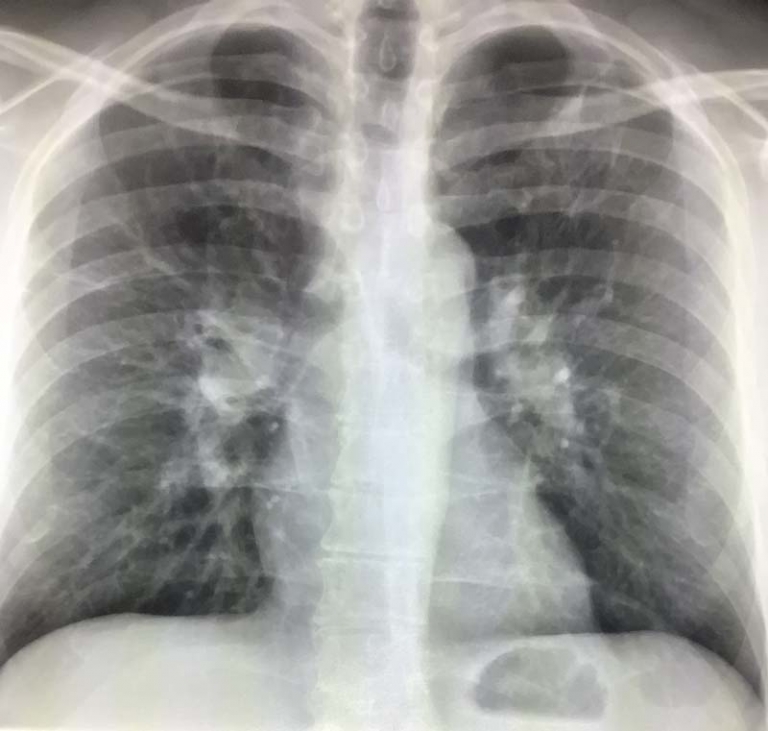Ground Glass Nodule on CT
Ground glass nodule on CT means that there is an abnormal spot in the lung that looks hazy amidst the dark background of the lungs. We can see the underlying lung vessels through the spot. Ground glass occurs in the lung when the normal air filled spaces get replaced by varied processes such as infection, inflammation, scarring, bleeding, air space collapse and cancer.
What can a ground glass nodule be?
Ground glass nodules on CT have numerous causes. We can not tell in many cases what they represent. It helps if there are old studies showing stability. It helps to follow these nodules over time. Sometimes these nodules will disappear when you image them again meaning they were benign. Those that stick around become more concerning for cancer or precancerous lesions.
Cancer is the main concern with ground glass nodules
The main concern with ground glass nodules is cancer. We do not always know if these nodules are cancerous when we first see them, but those that stick around on subsequent scans can represent precancerous or cancerous abnormalities. There are published guidelines notably from the Fleischner society for following these nodules over time.
What kind of cancers can ground glass nodules represent?
Some of these precancerous and cancerous lesions that can look like a ground glass nodule are: atypical adenomatous hyperplasia, adenocarcinoma in situ, minimally invasive adenocarcinoma, and invasive adenocarcinoma. The precancerous lesions will often be smaller, smoother in outline and hazier while the cancerous ones will be larger, irregular and have more then just ground glass density.
Benign causes of ground glass nodules
Infection
Many of these ground glass nodules will be from a small area of infection. Infections can be from a variety of microbes. Bacterial, viral, fungal pathogens can cause infections that can appear like ground glass nodules. These nodules will often disappear on follow up imaging, particularly when treated.
Bleeding
Bleeding into the lung can be from trauma, diseases of the blood vessels, infections, tumors, and biopsies to name some of the causes. Bleeding into the lung will get smaller over time. There will often be additional findings on the CT or history to help sort out the causes.
Scarring
Focal scarring can lead to ground glass nodules and opacities. This often occurs near the spine in the lower lungs in spines which have arthritis. Focal scarring can also occur from prior infections or other insults to the lung.
Metastasis
Spread of cancer to the lungs can sometimes look like ground glass nodules. There is often a known history of cancer and other findings on imaging related to cancer.
Guidelines for following ground glass nodules
There are published guidelines from the Fleischner society that many radiologists follow when seeing ground glass nodules on CT. These guidelines apply to patients who are under 35, have no cancer or diseases of the immune system. Nodules for those under 35 and with impaired immune systems are more likely to be from infections.
For ground glass nodules under 6 mm, we often do not follow these nodules because of their low risk. Over 6 mm we follow in 6-12 months and then every 2 years for 5 years. if a ground glass nodule has a bit of solid or white area, we call these sub solid nodules and follow them at 3-6 months. We then follow them yearly for 5 years. Persistence or growth of these nodules over time increases the chances of precancerous or cancerous lesions. Many grow slowly.
Ground glass nodules are those spots which are hazy amidst the dark background of the lungs. The causes are varied and many represent benign causes like infection or bleeding. There are published guidelines for following these nodules that many radiologists use.
Those that persist or grow on follow up imaging are more likely to be precancerous or cancerous. Those that look more complex then just ground glass or hazy are more concerning. Follow up and treatment of these nodules will often require involvement of lung and surgical specialists when they are determined to be suspicious.

